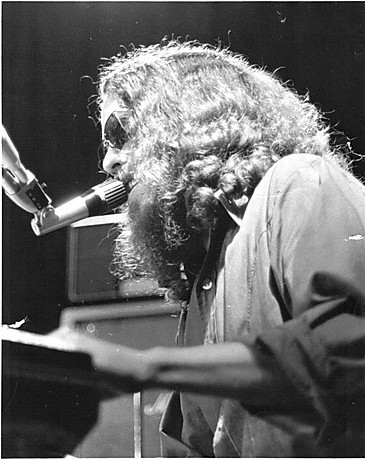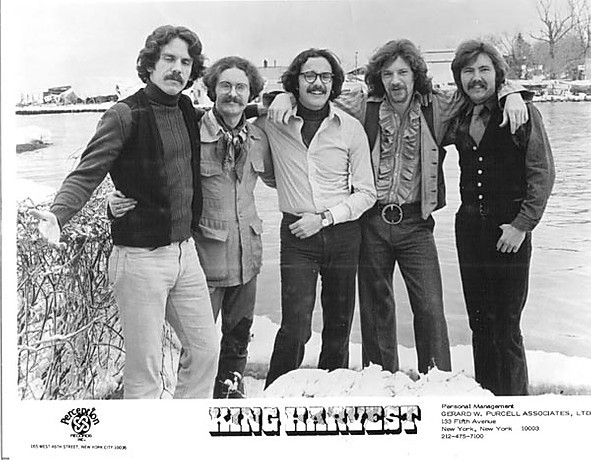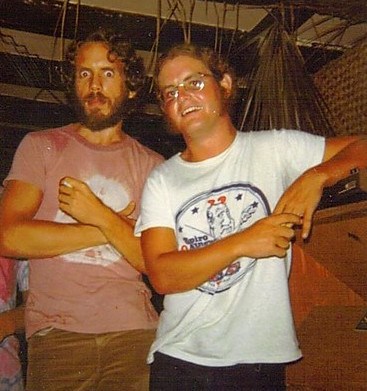Few songs encapsulate the breezy, joyful spirit of the 1970s quite like “Dancing in the Moonlight.” This timeless classic, forever etched in the soundtrack of summer nights, evokes images of carefree celebration under the celestial glow. But behind its upbeat rhythm and feel-good lyrics lies a surprisingly poignant and dramatic origin story, far removed from moonlit dances. This is the tale of how a traumatic event inspired the lyrics of “Dancing in the Moonlight,” a song that has resonated across generations and continues to invite us to revel in an imagined world of peace and joy.
The song became a hit for King Harvest in 1972, yet its journey began years earlier, in a vastly different setting. Sherman Kelly, the songwriter, never initially envisioned the song as a chart-topper, but its infectious melody and hopeful message propelled it into the hearts of millions. To truly understand the magic of “Dancing in the Moonlight,” we need to delve into the experiences that shaped its creation and the man behind the music.
 Sherman Kelly performing on stage in the 1970s, showcasing his early musical career.
Sherman Kelly performing on stage in the 1970s, showcasing his early musical career.
From Island Trauma to Lyrical Dream: The Genesis of a Classic
The story unfolds in 1969 in St. Thomas, Virgin Islands, where Sherman Kelly and friends ran a nightclub. An ill-fated day trip to St. Croix on a yacht took a dark turn when Kelly and his girlfriend succumbed to severe seasickness. Upon reaching St. Croix, seeking respite from the turbulent sea, they decided to stay ashore for the night, only to discover Kelly had left his wallet on the yacht. Penniless and seeking shelter, they encountered a series of unfortunate events culminating in a harrowing night on the beach.
What began as a romantic evening under the stars transformed into a nightmare. Kelly and his girlfriend became victims of a brutal attack by a local street gang. Severely beaten and left for dead, Kelly’s memory of the night is fragmented, pieced together through his own recollections and the accounts of others. The attack, believed to be among the early acts of the notorious Fountain Valley Gang, was a life-altering event. Kelly awoke in a hospital, his condition dire, overhearing doctors doubt his survival.
Against the odds, Kelly recovered, though the physical and emotional scars remained. Returning to his home in Ithaca, New York, he faced a long convalescence, grappling with pain and persistent headaches. Unable to perform music, songwriting became his refuge, a way to process his trauma and envision a world beyond his immediate suffering.
“Dancing in the Moonlight” Lyrics: Envisioning a World of Joy
It was during this period of recovery that the initial verses of “Dancing in the Moonlight” began to take shape. Far from being inspired by idyllic moonlit dances, the lyrics were born from a starkly contrasting reality. Kelly described the song as “an alternate reality, the dream of a peaceful and joyous celebration of life.” It was a conscious creation of a world “better than the one I had just experienced in St. Croix.”
The lyrics paint a picture of an imagined escape, a world where “everybody’s friendly, everybody’s groovy,” bathed in the gentle glow of the moon. This wasn’t a reflection of Kelly’s current reality, but a yearning for tranquility and happiness in the face of violence and trauma. The very act of writing became therapeutic, allowing him to channel his pain into a song that radiated positivity and hope.
 King Harvest band members in 1972, the year their hit song 'Dancing in the Moonlight' was released.
King Harvest band members in 1972, the year their hit song 'Dancing in the Moonlight' was released.
The Song’s Moonlight Journey: From Boffalongo to Global Stages
“Dancing in the Moonlight” wouldn’t immediately become a global phenomenon. Its initial journey was more of a slow burn, starting with Kelly’s band Boffalongo in 1970. This early version, while regionally popular, was not the polished hit we know today. Kelly himself is self-deprecating about his vocal performance on the Boffalongo recording, humorously recounting a less-than-ideal studio experience involving well-intentioned but misguided producers.
Despite Kelly’s vocal reservations, the Boffalongo version gained traction, and the song’s appeal was undeniable. Another group, High Broom, also recorded it in 1970, but it failed to chart. However, the song’s destiny was far from over.
When Boffalongo disbanded, Kelly’s brother, Wells Kelly, joined King Harvest, a band with former Boffalongo member Doc Robinson as lead singer. Wells introduced “Dancing in the Moonlight” to King Harvest, and this time, the song found its perfect vehicle. Released in 1972 with Robinson on lead vocals, King Harvest’s rendition captured the breezy essence of the lyrics and propelled the song to national and international recognition, reaching impressive chart positions and becoming a defining song of the era.
Sherman Kelly even toured with King Harvest during the summer of 1972, witnessing firsthand the burgeoning success of his creation. While he contributed harmony vocals in live performances, Doc Robinson remained the lead vocalist for “Dancing in the Moonlight,” a decision Kelly readily agreed with, acknowledging Robinson’s superior vocal abilities.
The song’s journey continued through various iterations. Wells Kelly later formed Orleans with Larry Hoppen (also from Boffalongo), and Orleans also recorded and performed “Dancing in the Moonlight,” further cementing its status as a beloved classic. In 2000, Toploader’s cover of “Dancing in the Moonlight” introduced the song to a new generation, proving its timeless appeal and ability to transcend musical eras. The song has also graced numerous films and television shows, and even found its way into video games, demonstrating its enduring cultural relevance.
Beyond the Moonlight: Sherman Kelly’s Later Life
While “Dancing in the Moonlight” remains Sherman Kelly’s most famous creation, his life story extends far beyond this iconic song. A graduate of Cornell University with degrees in psychology and English, Kelly pursued further studies in Paris, Switzerland, and New York City, showcasing a wide range of intellectual interests.
Following the tragic death of his brother Wells in 1984, Sherman Kelly stepped away from the music industry and dedicated himself to a different path. He earned a master’s degree in social work and psychotherapy, embarking on a long and fulfilling career as a psychotherapist. In 2008, he returned to his musical roots with the album “Burnin’ the Candle,” which included collaborations with his late brother, but his primary focus remained on helping others through therapy.
 Sherman Kelly and Larry Hoppen pictured together, highlighting their musical collaboration before Hoppen formed Orleans.
Sherman Kelly and Larry Hoppen pictured together, highlighting their musical collaboration before Hoppen formed Orleans.
“Dancing in the Moonlight,” a song born from darkness and pain, became a beacon of light and joy for countless listeners. Its enduring popularity is a testament to the power of music to transform personal experiences into universal messages of hope and resilience. The next time you hear the opening chords of this beloved song, remember the unexpected story behind the lyrics – a story of trauma transformed into a timeless invitation to dance in an imagined, moonlit world of peace and celebration.
